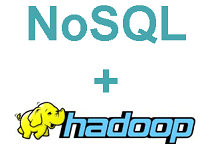16 NoSQL, NewSQL Databases To Watch
NoSQL and NewSQL databases have become much more important with the proliferation of big, mobile, and networked data, and these sixteen database solutions are some of the biggest up-and-comers.
Traditional relational databases weren't invented with mobile, social, and big data types -- or extreme scale -- in mind. These 16 NoSQL and NewSQL databases were engineered to address these types of challenges.
Related:
- Aerospike offers an in-memory speed edge that has attracted high-scale ad networks and other Web-scale businesses that need millisecond response times. Aerospike is banking on breaking into new categories including gaming, e-commmerce, and security where low latency is everything.
 Apache Cassandra's strengths are flexible, NoSQL data modeling, multi-data-center support, and linear scalability on clustered commodity hardware. Commercial support and software distributions are available from DataStax.
Apache Cassandra's strengths are flexible, NoSQL data modeling, multi-data-center support, and linear scalability on clustered commodity hardware. Commercial support and software distributions are available from DataStax.- Clustrix touts highly distributed, fault-tolerant scalability without giving up SQL or ACID transaction performance. The company bills customer Twoo.com's 21-node deployment (depicted above) as "the world's largest scale-out SQL deployment."
- Couchbase is working hard to cover all the bases, promising the document-handling advantages of MongoDB and the scalability of Cassandra. The company's latest push is Couchbase Mobile, launched in May, which keeps mobile apps running whether they're connected to networks or not.
- Amazon DynamoDB. Amazon developed Dynamo to scale up its own fast-growing e-commerce business, and its 2007 white papers inspired Cassandra, Riak, and other NoSQL projects in the process. The highly scalable DynamoDB database service arrived in 2012. It has been a big hit, but database services have since proliferated.
- HBase is the NoSQL database that runs on top of HDFS, so it gives users the unique ability to work directly with the data stored on Hadoop. Features include massive scalability (as used in Facebook's messaging system), consistent reads and writes, automatic and configurable sharding of tables, and automatic failover.
- Cloudant. When IBM acquired Cloudant (for undisclosed terms), pundits said the deal was all about tapping the company's database-as-a-service technology and expertise. An IBM exec also talked up the importance of the underlying open-source CouchDB DBMS (not to be confused with Couchbase). DBMS attributes include scalablity, availability, durability, concurrent reads and writes, and flexible data handling (including JSON, full-text, and geospatial data).
- MarkLogic had a long history as a successful XML database long before anybody was talking about NoSQL. MarkLogic is used extensively by large-scale technical, financial, legal, healthcare, and scientific heavyweights who need flexible ways to manage and reuse information. Adapted to broader use as a NoSQL document store, this schema-agnostic, clustered DBMS is highly scalable.
- MemSQL. As its name suggests, MemSQL is distinguished from high-scale NoSQL options by its combination of in-memory, ACID-compliant transactional performance and SQL compatibility. Adding to its relational interface on an in-memory data tier, MemSQL recently added a compressed columnar store supported by flash- and disk-storage options to support deep historical analysis.
- MongoDB. Open source MongoDB is the most popular NoSQL database, hands down, with more than 7 million downloads and hundreds of thousands of deployments. Its popularity is owed to the ease of development and flexible handling of the modern data seen in mobile, social, and Web applications. With the product's 2.6 release in May 2014, the vendor eased administration, beefed up security, and improved analytical capabilities.
- NuoDB is another of those NewSQL upstarts promising the combination of scalable, geo-distributable deployments with the familiarity of SQL. It offers expected high-availability, hot-upgrade, data-redundancy, and disaster-recovery capabilities.
- Oracle NoSQL. The NoSQL market leaders all say they never see the Oracle NoSQL Database in competitive situations, but then, they wouldn't. Customers for this product are clearly loyal Oracle shops that are making the most of a dominant vendor relationship.
- Riak. Open source Riak is designed for massive scalability, availability, fault tolerance, and operational simplicity. Basho-supported Riak Enterprise and Riak CS bring support plus enterprise-grade features and Amazon Web Services-compatible S3 cloud storage, respectively.
- Splice Machine. There are plenty of SQL-on-Hadoop options out there, but the unique claim of startup Splice Machine is that it can run transactional applications as well as support analytics on top of Hadoop.
- TransLattice started with a high-scale, distributed variation on PostgreSQL called the TransLattice Elastic Database that deploys on premises, on an appliance, or on multiple clouds. In 2013 the company acquired StormDB, which was also extending PostgreSQL, and used its intellectual property to launch Postgres-XL, a scalable, massively parallel analytical database.
- VoltDB has high-scale, high-speed transaction processing down pat thanks to its highly distributed, in-memory architecture. The open source, GNU-licensed DBMS, dreamed up in part by co-founder/DBMS luminary Dr. Michael Stonebraker, can handle fast-streaming data from the likes of telcos, mobile ad networks, and gaming companies.
Related:

 Apache Cassandra's strengths are flexible, NoSQL data modeling, multi-data-center support, and linear scalability on clustered commodity hardware. Commercial support and software distributions are available from
Apache Cassandra's strengths are flexible, NoSQL data modeling, multi-data-center support, and linear scalability on clustered commodity hardware. Commercial support and software distributions are available from